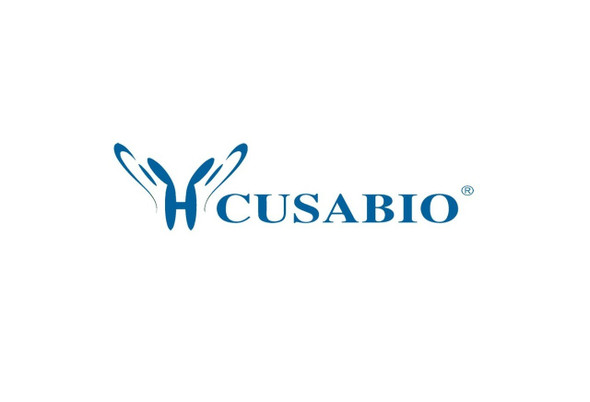Cusabio Mouse Recombinants
Recombinant Mouse Lipoprotein lipase (Lpl) | CSB-EP013065MO
- SKU:
- CSB-EP013065MO
- Availability:
- 3 - 7 Working Days
Description
Recombinant Mouse Lipoprotein lipase (Lpl) | CSB-EP013065MO | Cusabio
Alternative Name(s): LPL
Gene Names: Lpl
Research Areas: Signal Transduction
Organism: Mus musculus (Mouse)
AA Sequence: ADAGRDFSDIESKFALRTPEDTAEDTCHLIPGLADSVSNCHFNHSSKTFVVIHGWTVTGMYESWVPKLVAALYKREPDSNVIVVDWLYRAQQHYPVSAGYTKLVGNDVARFINWMEEEFNYPLDNVHLLGYSLGAHAAGVAGSLTNKKVNRITGLDPAGPNFEYAEAPSRLSPDDADFVDVLHTFTRGSPGRSIGIQKPVGHVDIYPNGGTFQPGCNIGEAIRVIAERGLGDVDQLVKCSHERSIHLFIDSLLNEENPSKAYRCNSKEAFEKGLCLSCRKNRCNNLGYEINKVRAKRSSKMYLKTRSQMPYKVFHYQVKIHFSGTEDGKQHNQAFEISLYGTVAESENIPFTLPEVSTNKTYSFLIYTEVDIGELLMMKLKWISDSYFSWPDWWSSPSFVIERIRVKAGETQKKVIFCAREKVSHLQKGKDSAVFVKCHDKSLKKSG
Source: E.coli
Tag Info: N-terminal 10xHis-tagged and C-terminal Myc-tagged
Expression Region: 28-474aa
Sequence Info: Full Length of Mature Protein
MW: 57.3 kDa
Purity: Greater than 90% as determined by SDS-PAGE.
Relevance: The primary function of this lipase is the hydrolysis of triglycerides of circulating chylomicrons and very low density lipoproteins (VLDL). Binding to heparin sulfate proteogylcans at the cell surface is vital to the function. The apolipoprotein, APOC2, acts as a coactivator of LPL activity in the presence of lipids on the luminal surface of vascular endothelium.
Reference: "Glycosylphosphatidylinositol-anchored high-density lipoprotein-binding protein 1 plays a critical role in the lipolytic processing of chylomicrons." Beigneux A.P., Davies B.S.J., Gin P., Weinstein M.M., Farber E., Qiao X., Peale F., Bunting S., Walzem R.L., Wong J.S., Blaner W.S., Ding Z.-M., Melford K., Wongsiriroj N., Shu X., de Sauvage F., Ryan R.O., Fong L.G., Bensadoun A., Young S.G. Cell Metab. 5:279-291(2007)
Storage: The shelf life is related to many factors, storage state, buffer ingredients, storage temperature and the stability of the protein itself. Generally, the shelf life of liquid form is 6 months at -20?/-80?. The shelf life of lyophilized form is 12 months at -20?/-80?.
Notes: Repeated freezing and thawing is not recommended. Store working aliquots at 4? for up to one week.
Function:
Involvement in disease:
Subcellular Location:
Protein Families:
Tissue Specificity:
Paythway:
Form: Liquid or Lyophilized powder
Buffer: If the delivery form is liquid, the default storage buffer is Tris/PBS-based buffer, 5%-50% glycerol. If the delivery form is lyophilized powder, the buffer before lyophilization is Tris/PBS-based buffer, 6% Trehalose, pH 8.0.
Reconstitution: We recommend that this vial be briefly centrifuged prior to opening to bring the contents to the bottom. Please reconstitute protein in deionized sterile water to a concentration of 0.1-1.0 mg/mL.We recommend to add 5-50% of glycerol (final concentration) and aliquot for long-term storage at -20?/-80?. Our default final concentration of glycerol is 50%. Customers could use it as reference.
Uniprot ID: P11152
HGNC Database Link: N/A
UniGene Database Link: N/A
KEGG Database Link: N/A
STRING Database Link: N/A
OMIM Database Link: N/A






